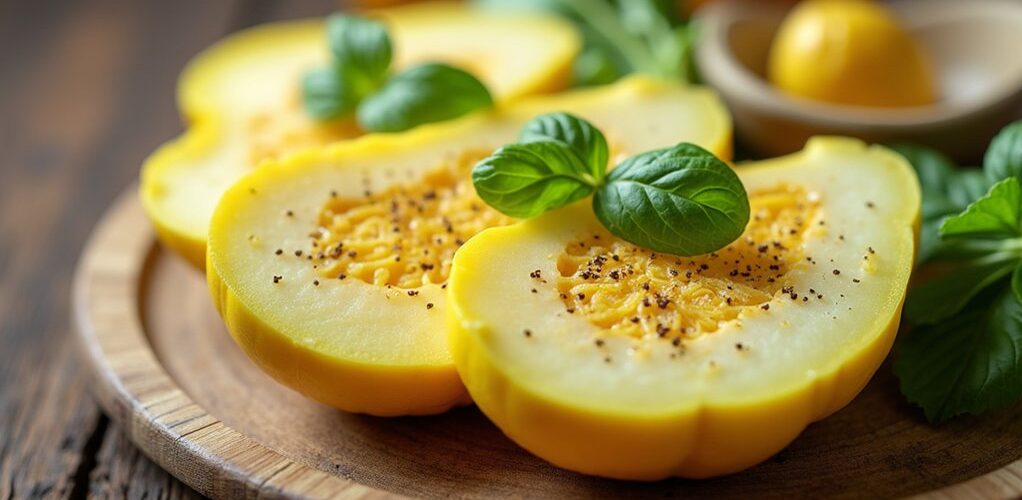
Chayote squash is indeed a low-carb vegetable, containing only 4.5 grams of net carbs per 100 grams, making it ideal for ketogenic and low-carbohydrate diets. This tropical squash offers substantial nutritional benefits with 4 grams of fiber per serving, vitamin C, and essential minerals, while maintaining a modest 39 calories per whole squash. Its versatility in both sweet and savory dishes, combined with its complete edibility from flesh to leaves, positions chayote as an excellent alternative to higher-carb vegetables, with numerous preparation methods to explore.
Key Takeaways
- Chayote contains only 4.5 grams of net carbs per 100 grams, making it a low-carb vegetable suitable for ketogenic diets.
- With 39 calories per whole squash and 4 grams of fiber, chayote provides fullness while maintaining low carbohydrate content.
- Chayote has fewer net carbs than bell peppers but more than spinach and cauliflower, positioning it as a moderate low-carb option.
- The squash's high fiber content helps offset its carbohydrate impact while supporting digestive health and maintaining blood sugar levels.
- All parts of chayote are edible and can be prepared through various low-carb cooking methods like roasting, steaming, or raw consumption.
What Makes Chayote a Unique Tropical Squash
While many tropical fruits and vegetables have found their way into global cuisine, chayote stands out as a particularly versatile member of the squash family. This unique tropical squash offers remarkable adaptability in both sweet and savory dishes, with every part of the plant being edible, from its crisp flesh to its tender leaves.
What truly sets chayote apart is its combination of low carb content and rich essential nutrients, including vitamin C and folate, making it an excellent choice for health-conscious consumers. Its year-round availability in tropical and subtropical regions guarantees consistent access to its nutritional benefits.
The mild flavor profile and crunchy texture of this versatile squash make it an ideal ingredient for diverse culinary uses, while its botanical classification as a fruit adds an intriguing dimension to its versatility.
Understanding Chayote's Carbohydrate Content
The impressive carbohydrate profile of chayote makes it a standout choice for health-conscious individuals and those following specific dietary plans. With only 4.5 grams of net carbs per 100 grams, this tropical squash delivers exceptional nutritional value while maintaining a low carb count.
Chayote's composition includes approximately 9 grams of total carbohydrates per 100 grams, with a substantial portion consisting of beneficial dietary fiber. This fiber content, measuring around 4 grams, plays a significant role in stabilizing blood sugar levels and supporting digestive health.
The vegetable's modest calorie count of 39 calories per whole squash further enhances its appeal as a versatile ingredient. These characteristics position chayote as an ideal substitute for higher-carbohydrate vegetables, offering flexibility in meal planning while maintaining dietary goals.
Essential Nutrients and Health Benefits
Packed with essential nutrients, chayote delivers an impressive array of health benefits that extend far beyond its low-carbohydrate profile. This versatile squash is low in calories while being an excellent source of dietary fiber, contributing approximately 4 grams per serving to support digestive health and promote feelings of fullness.
A nutrient-rich powerhouse, chayote offers remarkable health benefits while keeping calories low and fiber content high for optimal digestive wellness.
The health benefits of chayote are particularly significant due to its rich vitamin C content, providing over 31% of the daily recommended value in a single squash.
Additionally, this tropical vegetable contains important B-complex vitamins, including B6 and B9, which play critical roles in energy metabolism.
Chayote's mineral profile further enhances its nutritional value, with significant amounts of potassium and magnesium supporting cardiovascular health and proper muscle function.
Comparing Chayote to Other Low-Carb Vegetables
Among popular low-carb vegetables, chayote stands out as a versatile option with its moderate carbohydrate content of 4.5 grams per 100 grams, positioning it favorably between zucchini and bell peppers. While vegetables like spinach and cauliflower contain fewer net carbs at 1.4 and 2 grams respectively, chayote's adaptability in various dishes makes it an attractive choice for those following a low-carb diet. The tropical squash's fiber content of 4 grams per 100 grams matches that of broccoli, supporting digestive health while maintaining its low-carb status. When compared to bell peppers, which contain 6 grams of net carbs, chayote provides a lower-carb alternative without sacrificing the desired crunch and moisture in meals, making it an excellent choice for ketogenic and low-carb dietary plans. Additionally, chayote can be paired with healthy oils like olive or avocado oil to enhance its flavor and nutritional value in keto-friendly dishes.
Best Ways to Prepare Chayote for Keto Meals
When preparing chayote for keto meals, both roasting and steaming offer distinct advantages, with roasting bringing out natural sweetness while steaming preserves more nutrients and creates a tender texture.
Raw chayote preparation requires careful peeling and slicing to maintain its crisp texture, making it ideal for salads and slaws when cut into thin strips or julienne pieces.
The versatility of chayote allows for multiple cooking approaches, from quick steam-sautés that maintain its subtle flavor to longer roasting sessions that create caramelization and deeper taste profiles.
Roasting Vs Steaming Chayote
As health-conscious individuals explore keto-friendly cooking methods, the choice between roasting and steaming chayote presents two distinct approaches to preparing this versatile squash.
Roasting chayote at 400°F for 25-30 minutes develops a crispy texture and enhances its natural sweetness, making it an excellent low-carb side dish for keto meals.
Meanwhile, steaming for 5-10 minutes preserves more nutrients while providing a tender, crunchy texture that works particularly well in salads.
Both methods maintain chayote's keto-friendly profile of 4.5g net carbs per 100g serving and allow the vegetable to readily absorb seasonings.
The choice between methods ultimately depends on the desired outcome: roasting for a more complex, caramelized flavor, or steaming for a lighter, fresher taste while retaining maximum nutritional benefits.
Raw Chayote Cooking Tips
The versatility of raw chayote creates numerous opportunities for keto-friendly meal preparation, with proper techniques enhancing both flavor and nutritional value. This low carb vegetable can be thinly sliced and seasoned with olive oil, salt, and pepper for immediate use in fresh salads, where it provides a satisfying crunch and mild flavor profile.
For best results when preparing raw chayote, thoroughly wash the exterior and slice it into uniform pieces, which guarantees consistent texture throughout dishes.
The vegetable pairs exceptionally well with citrus dressings and fresh herbs, making it a versatile addition to various cold dishes. When incorporating raw chayote into recipes, consider its ability to absorb surrounding flavors while maintaining its crisp texture, making it an excellent substitute for higher-carb vegetables in keto-friendly meals.
Popular Chayote Recipes Around the World
Chayote's culinary versatility shines through its distinct preparations across different regions, from Louisiana's crawfish-stuffed mirliton to the Philippines' savory incorporation in sinigang and tinola.
The vegetable's adaptability is particularly evident in Latin American cuisines, where it appears in traditional dishes like Guatemalan güisquil preparations and Brazilian chuchu fritters.
While Mediterranean cultures have more recently embraced chayote, incorporating it into their vegetable-forward dishes, Asian cuisines have long celebrated its subtle flavor in curries, stir-fries, and soups.
Traditional Latin American Dishes
Throughout Latin American cuisine, chayote plays a starring role in numerous beloved traditional dishes, where its mild flavor and adaptable nature make it an essential ingredient across diverse regional recipes.
Its versatility shines in preparations like "chayote relleno," where the squash is stuffed with various fillings, and "guiso de chayote," a flavorful stew combining potatoes and aromatic spices.
In Guatemala, where it's known as "güisquil," and Brazil, where it's called "chuchu," the vegetable features prominently in stir-fries, soups, and fresh salads.
The traditional cuisine extends beyond Latin America, influencing Louisiana Creole cooking, where the mirliton, as it's locally known, becomes the centerpiece of holiday dishes, particularly in crawfish-stuffed preparations and hearty casseroles.
Asian Chayote Preparations
Moving beyond Latin America's borders, Asian cuisines have embraced chayote with remarkable creativity, incorporating this versatile squash into an array of distinctive preparations.
The low-carb vegetable pear has found its way into Filipino dishes like sinigang and tinola, while Indonesian cooks transform both the fruit and shoots into flavorful stir-fries under the name labu siam.
In Korean cuisine, chayote takes on new dimensions through pickled preparations called chayote-jangajji and chayote-muchim, offering tangy flavor profiles.
Chinese culinary traditions feature this nutritious squash in stir-fries, where it's known as Buddha's palm or choko in Cantonese regions.
Across Asia, chayote's mild taste and crisp texture have secured its position as a valued ingredient in traditional cooking methods.
Mediterranean Chayote Adaptations
While Latin American and Asian cuisines have long histories with chayote, Mediterranean culinary traditions have developed their own innovative adaptations of this versatile squash.
Mediterranean cuisine has embraced chayote's mild flavor and versatility, incorporating it into various cooking methods and regional specialties. From Italian sautés with garlic and olive oil to Greek stews with tomatoes and herbs, chayote has found its place in traditional Mediterranean dishes.
Key Mediterranean culinary applications for chayote include:
- Italian-style sautéed preparations with garlic and olive oil
- Greek stews featuring tomatoes and aromatic herbs
- Spanish paella and seafood accompaniments
- North African tagines with spices and legumes
This adaptability demonstrates chayote's successful integration into Mediterranean cooking, where it complements regional ingredients like olives, feta cheese, and fresh herbs.
Shopping Guide: Where to Find Fresh Chayote
Wondering where to find fresh chayote for your next culinary adventure? This versatile squash can be found at Latin, Asian, or Indian grocery stores across the country.
Specialty retailers like Vallarta Mexican Store and Chinese Grocery Store regularly stock chayote, making it accessible to home cooks exploring international cuisines.
Ethnic grocery stores provide reliable access to chayote squash year-round, helping adventurous cooks discover flavors from around the world.
For residents of Southern states including California, Arizona, New Mexico, Texas, and Louisiana, chayote is readily available in local supermarkets and farmers' markets.
The best time for shopping is during the fall harvest season when supplies are most abundant.
When selecting chayote, choose smaller, firm specimens without brown spots for ideal tenderness and flavor.
These shopping guidelines guarantee successful procurement of quality chayote for various culinary applications.
Storage Tips and Shelf Life
Proper storage of chayote squash begins with keeping the vegetable unwashed and dry until ready for use, as excess moisture can promote spoilage.
Fresh chayote maintains peak quality when stored in a plastic bag within the refrigerator's crisper drawer, where it can remain fresh for up to two weeks with regular monitoring for signs of deterioration.
For those planning to preserve cooked chayote, an airtight container in the refrigerator provides safe storage for three to four days, though the texture may gradually soften over time.
Fresh Storage Methods
Successful storage of chayote squash begins with understanding its ideal preservation conditions and shelf life requirements. When properly stored, chayote can maintain its freshness for up to a week at room temperature in a cool, dry place.
For extended shelf life, refrigeration in a perforated plastic bag offers excellent preservation, keeping the vegetable fresh for 2-3 weeks while maintaining necessary moisture levels.
- Select firm chayotes without blemishes or soft spots
- Store in a single layer to prevent bruising
- Place in a perforated plastic bag when refrigerating
- Wrap cut pieces tightly in plastic wrap
Proper storage techniques greatly reduce the risk of spoilage and maintain the vegetable's quality.
For the best results, regularly inspect stored chayotes and remove any showing signs of deterioration to prevent affecting others.
Long Term Preservation Tips
While fresh storage methods work well for short-term needs, implementing proper long-term preservation techniques can extend chayote's shelf life considerably beyond its typical storage duration.
For best results, store chayote in a cool, dry environment with temperatures ranging from 50°F to 60°F to prolong freshness. When using refrigeration, place the vegetable in breathable bags to prevent moisture accumulation, ensuring preservation for up to two weeks.
For extended storage periods, blanched chayote can be frozen in airtight containers or freezer bags, maintaining quality for up to six months.
Avoid washing the vegetable until ready for use, as excess moisture promotes spoilage. If sprouting occurs, the chayote remains edible after removing the sprouted sections before preparation.
Common Cooking Methods and Techniques
Mastering chayote preparation opens up a world of culinary possibilities, from simple raw preparations to more complex cooking methods. This versatile addition to any kitchen can be enjoyed raw or cooked, with common cooking methods including steaming, sautéing, and baking.
The mild-flavored squash readily absorbs surrounding flavors in soups and stews, while maintaining its distinctive qualities.
- Steam until tender to preserve nutritional content and achieve a soft texture
- Sauté with complementary ingredients to enhance natural flavors
- Add raw to salads or salsas for invigorating crunch
- Bake or roast to develop caramelized sweetness
Every part of the chayote plant can be incorporated into dishes, making it an exceptionally versatile ingredient for creative chayote recipes ranging from simple to sophisticated preparations.
Pairing Chayote With Other Low-Carb Foods
Creating flavorful low-carb meals becomes effortless when pairing chayote with complementary ingredients that share its nutritional profile. With only 4.5 grams of net carbs per 100-gram serving, this versatile squash combines exceptionally well with various proteins, including chicken, turkey, and shrimp, to create satisfying dishes. Chayote's mild flavor makes it an excellent canvas for spices and seasonings, allowing it to enhance low-carb soups and stews when combined with other vegetables like zucchini and bell peppers. In fresh preparations, it adds a pleasing crunch to salads alongside leafy greens, cucumbers, and radishes. To optimize satiety while maintaining minimal carbohydrate content, pairing chayote with healthy fats such as olive oil or avocado creates well-balanced, nutritious meals suitable for ketogenic diets. Incorporating low-carb vegetables like broccoli and cauliflower into your meals can also enhance nutritional value while maintaining ketosis.
Seasonal Availability and Selection Tips
Finding fresh chayote throughout the year proves remarkably straightforward, as this versatile squash maintains consistent availability across seasons, with its peak harvest occurring during autumn months.
Chayote's year-round availability makes it a reliable kitchen staple, with autumn bringing an abundance of this adaptable squash.
While seasonal availability varies by region, Southern states like California, Texas, and Louisiana offer more reliable access due to their established culinary traditions incorporating this tropical squash.
Key tips for selecting and finding quality chayote:
- Choose smaller, firm fruits without brown spots for ideal tenderness and flavor
- Visit specialty grocery stores focusing on Latin, Asian, or Indian ingredients
- Check local farmers' markets during peak season for freshly harvested options
- Consider regional availability patterns when planning purchases, particularly in Southern states where the vegetable is more commonly found
Cultural Significance and Global Uses
Beyond its year-round availability in markets, chayote carries deep cultural significance across numerous global cuisines, where it appears under various regional names and preparations. In Louisiana, it's known as mirliton, while Central Americans call it güisquil, incorporating it into traditional dishes during holiday celebrations and family gatherings.
The vegetable's versatility shines through its global culinary reach, from Latin American salads and soups to Southeast Asian classics like sinigang and tinola.
In the Philippines, both the fruit and shoots are prized ingredients, while African cuisine transforms chayote into hearty dumplings and flavorful curries.
This adaptable squash seamlessly shifts between savory and sweet preparations, demonstrating how different cultures have embraced and reimagined its use in their distinctive culinary traditions.
Frequently Asked Questions
Can I Eat Chayote on a Low Carb Diet?
Chayote's nutritional benefits include low calorie content and high fiber content, making it ideal for low-carb diets. Various cooking methods enhance its versatility while presenting minimal health risks at 4.5g net carbs per 100g serving.
Is Chayote Squash High in Carbs?
Chayote squash maintains a low carb content with only 4.5g net carbs per 100g. Similar to zucchini, its nutritional benefits and versatile cooking methods make it ideal for health-conscious diets.
What Is the Lowest Carb Squash?
Zucchini offers the lowest carb content at 3 grams per 100g, matching yellow squash. Its versatile cooking methods, mild flavor profile, and year-round availability make it an excellent choice for health-conscious individuals.
What Are the Side Effects of Chayote Squash?
Despite its nutritional benefits, chayote squash may cause allergic reactions, gastrointestinal discomfort, bloating, and mineral imbalances in some individuals. Those with specific dietary restrictions should exercise caution when consuming this vegetable.
Conclusion
Chayote stands out as an excellent low-carb vegetable choice, containing only 4.5 grams of carbohydrates per 100-gram serving. Its versatility in cooking, year-round availability, and rich nutrient profile make it particularly valuable for those following ketogenic or low-carb diets. Whether steamed, sautéed, or raw, this tropical squash offers a sustainable way to maintain dietary goals while enjoying diverse, flavorful meals that support overall health and wellness.


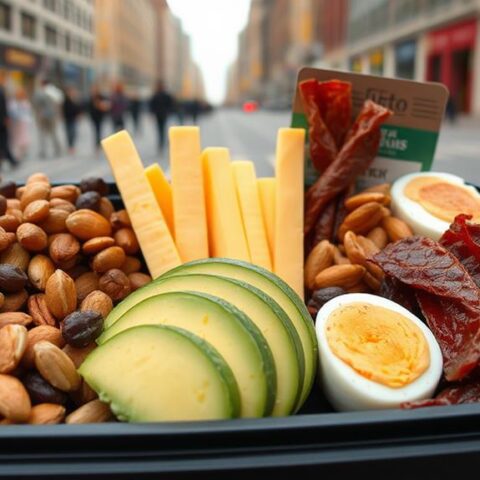

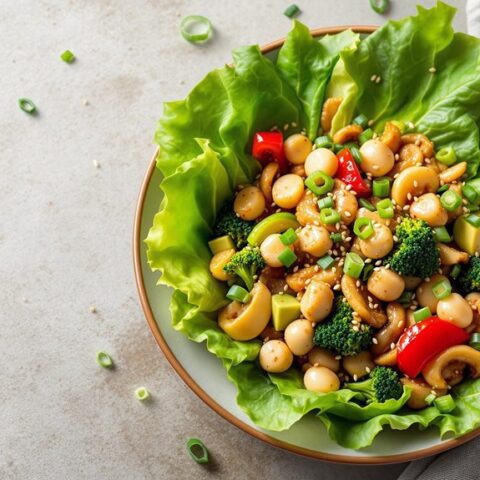

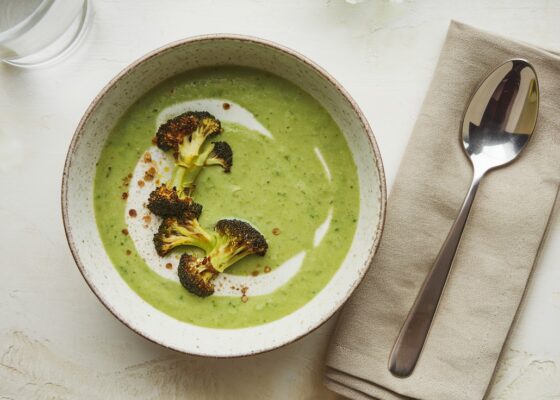

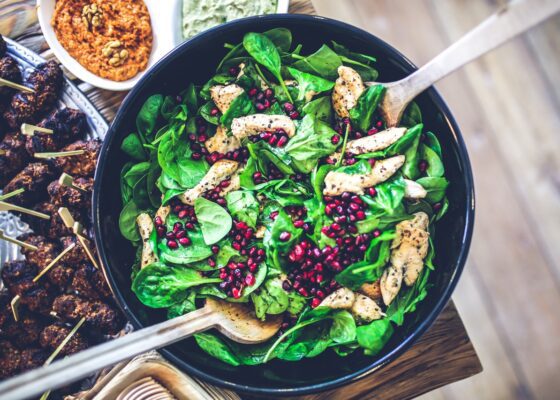

No Comments